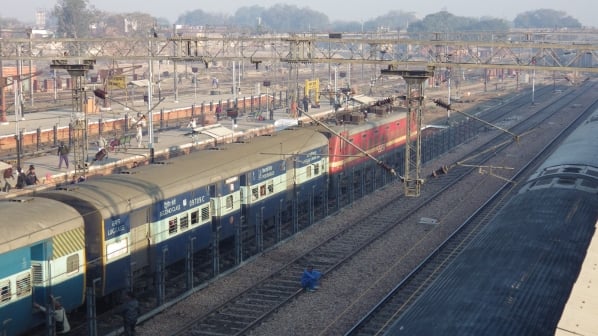The plan aims to integrate the IR network with other modes of transport to achieve a seamless multi-modal transport network across the country. It also calls for the deployment of Artificial Intelligence (AI) tools on future infrastructure expansion and rolling stock modernisation projects.
“The NRP, which is being formulated by the state-run Rail India Technical and Economic Services (Rites) in consultation with Aecom, United States, will form the template for rail development in India until 2050,” says Mr V Shankar, IR board executive director, planning. “The policy will be formally adopted in the first week of December, but major recommendations contained in the draft report have already been accepted and are in the process of being implemented.”
Route surveys for new line construction had previously been conducted according to the demands of Members of Parliament. The NRP proposes to reverse this process by having a network plan in place before sanctioning fresh surveys.
The NRP envisages speed upgrades on IR’s Golden Quadrilateral and Golden Diagonal routes, first to 130km/h and subsequently to 160km/h. Current average speeds of IR’s Mail and Express trains are 55km/h.
The document stresses the need for IR to complete pending track doubling and yard remodelling work at a “rapid pace” and pushes for the installation of advanced signalling systems, use of longer passing loops, and construction of major bridges and tunnels at strategic locations.
The NRP’s efficiency improvement recommendations highlight the need for AI tools for data analysis to help IR run trains on demand, use capacity effectively, improve quality of services through accurate demand prediction, optimise resource utilisation and accurate asset planning. The Secundrabad-based South Central Railway (SCR) zone has been entrusted with the responsibility of working on AI plans in coordination with the Indian School of Business.
Integration
The Indian government has prepared several similar plans and white papers in the past, but these have mostly been project-based. “The NRP is the first pan-Indian plan to integrate IR’s infrastructure needs with a business plan,” Shankar says.
Sanctioned in the 2017 Union budget, the NRP formulation exercise involved field work in over 100 districts over a 12-month period to gather primary data across sectors including mines, ports, power stations, and commercial areas. This was followed up with an exercise in determining the peak and slack periods of freight flows across transport sectors, as well as an analysis of the emerging economic trends. Events such as the Covid-19 pandemic have also been considered.
“By adopting an integrated planning approach, cost optimisation of the transport network can be achieved as new rail lines and highways in tunnels or mega bridges can be constructed simultaneously,” a senior ministry official said.

